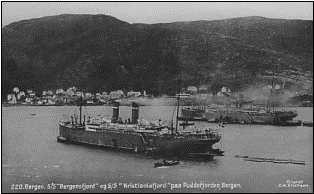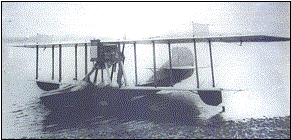By: Rob Mulder
For: www.europeanairlines.no
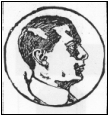 Behind this curious title lies the history of the American aviator Carl Truman Batts, who on behalf of the American Curtiss Company arrived in April 1919 in Bergen, Norway to fly one of the products of the Curtiss Company, the Curtiss MF Seagull, the post-war version of the successful Curtiss MF flying boat. Here is the story of his stay in Norway.
Behind this curious title lies the history of the American aviator Carl Truman Batts, who on behalf of the American Curtiss Company arrived in April 1919 in Bergen, Norway to fly one of the products of the Curtiss Company, the Curtiss MF Seagull, the post-war version of the successful Curtiss MF flying boat. Here is the story of his stay in Norway.
During his stay in Norway he made numerous flights and visited cities like Tønsberg, Kristiansand, Stavanger, Bergen, Kristiania and Hamar. The Norwegians, who referred to him as ”Mr Batts”, just loved him and closed him in their arms.
Arrival in Bergen and assembly
In the last days of the month of April in the year 1919 the “SS Bergensfjord” sailed into the harbour of the Hanseatic city of Bergen and docked at the outskirts of the city. On board were large wooden boxes that were hoisted on a waiting train. From here the boxes were transported through Norway on the famous Bergen Railway to Kristiania (until 1925 the name of Oslo) and Tønsberg, Norway’s eldest city. It was lifted on lorries and taken to the factory of the Christian Hellesen, A/S Norsk Aeroplanfabrik. Here the boxes were opened and skilled personnel started to assemble the aircraft. This took only a few days and on 10 May the flying boat was ready for its first flight.
The aircraft in question was a Curtiss MF Seagull (registered in Norway as a Curtiss MF), the post-war development of Model F. It could carry two persons, including the pilot and was powered by a 160 hp Curtiss C-6A pusher. The span was 49’9” (15,21 metres), the length 28’10” (8,57 metres) and it cruised at a ceiling of 3,000 feet (915 metres). (The picture shown here is of a Curtiss MF Seagull. Note 1). The colours of the aircraft were: fuselage black and wings white. It was subsequently registered in the Norwegian Air Register as N-4 on the name of Carl Truman Batts. But the registration was not painted on the flying boat. Only the letter “N” was painted on the noose and on top and underneath the wings. It was officially certified by the Marinens Flygevåpen (Navy Air Service) and registered in May 1919. In Norway the price of the flying boat was given as $ 13,000 when delivered in Norway. When delivered in New York, the Curtiss would cost you $ 10,000.
The first flight through Norway
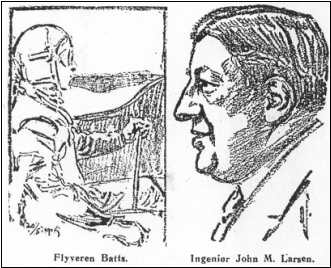 On 11 May 1919 Carl Truman Batts and his passenger John M Larsen were ready for take-off. Latter was of origin a Danish citizen, who had immigrated to the USA in 1892. He had made a fortune on designing, producing and selling cooling machines in the USA. Larsen was employed by the Curtiss Company to sell Curtiss flying boats in Europe, but during his stay in Europe he saw the Junkers J 13 Type F (later known as the Junkers F 13) and was so impressed, that he wanted to sell the aircraft in the USA. In 1920 he formed in cooperation with the Junkers Flugzeugwerk AG and in the USA the Junkers-Larsen Corporation. This company imported a number of Junkers J 13 Type F that was sold as Junkers JL-6 in the USA. But in 1919 John M Larsen was in Europe to sell the Curtiss flying boat. Carl Truman Batts had been instructor at Glenn Curtiss’ “The Atlantic Coast Aeronautical Station” (founded in 1915). Other well-known instructors connected to the training school were Major William Mitchell and Eddie Stinson. Carl Batts presented himself as a (world?) looping champion.
On 11 May 1919 Carl Truman Batts and his passenger John M Larsen were ready for take-off. Latter was of origin a Danish citizen, who had immigrated to the USA in 1892. He had made a fortune on designing, producing and selling cooling machines in the USA. Larsen was employed by the Curtiss Company to sell Curtiss flying boats in Europe, but during his stay in Europe he saw the Junkers J 13 Type F (later known as the Junkers F 13) and was so impressed, that he wanted to sell the aircraft in the USA. In 1920 he formed in cooperation with the Junkers Flugzeugwerk AG and in the USA the Junkers-Larsen Corporation. This company imported a number of Junkers J 13 Type F that was sold as Junkers JL-6 in the USA. But in 1919 John M Larsen was in Europe to sell the Curtiss flying boat. Carl Truman Batts had been instructor at Glenn Curtiss’ “The Atlantic Coast Aeronautical Station” (founded in 1915). Other well-known instructors connected to the training school were Major William Mitchell and Eddie Stinson. Carl Batts presented himself as a (world?) looping champion.
Carl Batts had requested for authorisation to fly over Norwegian territory and after the Forsvarsdepartementet (the Norwegian Ministry of Defence) had given him permission for the special flight he commenced this flight along the Norwegian south coast. On 11 May he started with a test flight and could at 7 am depart from Tønsberg. John M Larsen joined him as passenger. They arrived at Kristiansand around 9 am and moored the flying boat at the Navy’s Air Station close to the centre of town. The flying boat was refuelled and departed for Stavanger at 11.30 am. The flight to Stavanger lasted 1 hour and 25 minutes, while the last leg to Bergen lasted 1 hour and 15 minutes. Total flying time 4 hours and 10 minutes. Mr Batts landed the flying boat smoothly on the Puddefjord in Bergen around 5.30 pm. After a short rest he took off at 7 pm again and climbed to a height of 1,000 metres where he made a half-an-hour flight over the centre of Bergen. Originally, the plan had been to come one day earlier to Bergen and make aerial pictures of the SS Stavangerfjord, the ship that brought John M Larsen to Bergen. But due to the delay of the flight they could not meet the ship when it sailed into the Puddefjord.
They stayed overnight and departed already the following day back to Stavanger. On 12 May the departure from Bergen was at 12 noon and they immediately flew in southern direction. Near Stavanger Mr Batts landed near the Stavanger Cementfabrik, where the manager Jacob Pedersen had stored petrol for the flying boat. After refuelling they started their take-off for the next leg to Kristiansand, but the flying boat just could not take-off from the calm water. A boat therefore towed the Curtiss MF Seagull to the marina Sølyst, where Mr Batts immediately started to overhaul the engine. In addition the fuselage had taken in water. During the take-off in Bergen and the landing in Stavanger two holes had developed in the fuselage. These had to be repaired with mahogany.
Arriving in Kristiania
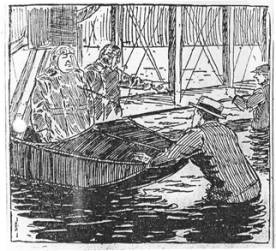 The next day (13 May) the Curtiss MF Seagull, N-4 was ready and at 7.23 pm it managed to take-off from the water and fly in south-eastern direction to Kristiansand. They arrived here at 9.12 pm. Again an overnight was made and on 14 May at 2.30 am they continued for Kristiania (now: Oslo). They were escorted for a short while (possibly in a Sopwith Baby) by the Norwegian Premierløitnant (lieutenant) Leif Ragnar Dietrichson, who was the Navy Air Force’s station manager in Kristiansand (2).
The next day (13 May) the Curtiss MF Seagull, N-4 was ready and at 7.23 pm it managed to take-off from the water and fly in south-eastern direction to Kristiansand. They arrived here at 9.12 pm. Again an overnight was made and on 14 May at 2.30 am they continued for Kristiania (now: Oslo). They were escorted for a short while (possibly in a Sopwith Baby) by the Norwegian Premierløitnant (lieutenant) Leif Ragnar Dietrichson, who was the Navy Air Force’s station manager in Kristiansand (2).
The American steered his Curtiss Seagull along the Kristiania Fjord towards Kristiania, the capital of Norway. At 12.20 noon a message from Drøbak came in telling that Mr Batts had passed this lovely city at the fjords narrowest point. Ten minutes later he arrived above Kristiania and the roaring of the engine could be heard all over town. After an elegant flight above the city the impressive flying boat landed on the water of Bestumkilen. It moored at the marina of A/S Maritime (situated at a small sound just outside the centre of Kristiania. The manager Bryde welcomed them to Kristiania (see contemporary drawing from the newspaper Aftenposten. We can see from left to right: The Scandinavian representative of the Curtiss Company, John M Larsen, the pilot Carl T Batts giving directions to a helper near the wing and in front of the flying boat Mr Bryde, the manager of A/S Maritime). John M Larsen later told the press: “This was a rather uncomfortable journey. The weather was cold and there was a lot of fog… We used two hours and 10 minutes without landing and flew relatively low. 2,200 feet (3) was the highest we flew.”
The plan was to stay in Kristiania for some days and the day following their arrival it was expected that Mr Batts would give a demonstration and show the people of Kristiania his famous loopings. Thursday turned out to be a resting day and the flying boat was overhauled. On Friday 16 May it was announced that Mr Batts would fly over Kristiania. It was informed also that the Curtiss MF Seagull was not suited for loopings, so the citizen could not expect this to see that day.
On 17 May (the National Holiday of Norway with children’s parade) Mr Batts would make joy-ride flights from Bestumkilen. Unfortunately the weather that day did not allow many flights and only one flight could be made.
Upon arrival it was made public that Mr Batts had made an agreement with the Nordisk Filmkompagnie (Nordic Movie Company). They hired Mr Batts for a flight to the Jotunheimen Mountains to make a shot of the mountains for a film about one of the fairytales of Danish writer Hans Christian Andersen. But it seems that this flight was not made.
Flying to Hamar at Lake Mjøsa
On Sunday 18 May Mr Batts was active again. In the early hours of this Sunday Mr Batts took Mr Bryde up in the air. He would be flown to Hamar, at the shores of Lake Mjøsa, the largest lake of Norway. At 5 am they departed from Bestumkilen and climbed to 4,000 feet (1,200 metres). The first point of orientation was Lake Øieren and from there they followed the river Glomma upstream. At 6.15 am they arrived at Hamar and landed in front of a large and ecstatic crowd. But the visit did not last long. At 6.40 am the Curtiss took off again. Mr Bryde remained in Hamar and returned to Kristiania by train. On his way a new passenger, Knut C Langaard, a local landowner, joined Mr Batts. The 90 kilometres (56 miles) were flown in just 40 minutes and at 7.20 am the Curtiss MF Seagull, N-4 returned on its nest in the Bestumkilen. Mr Batts described the flight as follows: “Ah, great, brilliant. I have never seen a similar scenery with mountains, lakes and forests and many beautiful farms in between.”
But he was not ready with flying. The next day Mr Batts started with a flight from Kristiania to Tønsberg with Ernst Rolf (the popular Swedish actor and singer?) as passenger. Upon return Mr Batts took to the air again, now with a journalist of the newspaper Aftenposten for a flight to Engene, where an explosion and an all-destroying fire had burned down a large factory. Four people were killed in this fire. The journalist made his report while in the air and this was in Norway reported as being the first time an aircraft was in service of the press.
Once returned from this flight, Mr Batts took to the air again, this time with Mrs Larsen-Grand, the wife of John M Larsen. She had the possibility to see Kristiania from 1,500 metres and enjoy the view on this lovely city. If this was not enough, Mr Batts made a few joy-ride flights extra for new passengers. After that he could finally enjoy a well-deserved supper.
A “first” for John M Larsen and Mr Batts
John M Larsen and Mr Batts can claim and have received recognition of being the first to have crossed the sea between Norway and Denmark by flying boat. On Friday 23 May at 9.20 am John M Larsen was (who was the pilot) and Mr Batts took off for the next stretch of their journey through Scandinavia. They were going to fly to København (Copenhagen, Denmark), Stockholm (Sweden) and Helsinki (capital of the than young republic of Finland). The flight took them from Kristiania along the Kristiania Fjord to Oscarborg Fortress (passed there at 9.35 am) and some 25 minutes later Færder Lighthouse at the entrance of the Kristiania Fjord. Because of low clouds, the aircraft could not be seen and this was the last Norway heard of the aircraft for a while. The flight across the Skagerak went without any problems and they arrived at Skagen on the tip of Denmark at 11.20 am. John M Larsen probably made this flight as pilot, because he wanted to fly to his home country himself. The Curtiss Seagull was moored at the beach near the western pier and immediately scores of children gathered around the flying boat. Mr Larsen tried to send them away, but they continued touching the flying boat. They stayed in Skagen for just a few hours. John M Larsen went ashore and inspected one of his cooling facilities, before he returned to the flying boat for the next leg of the journey to København. Mr Larsen’s mother lived in Hjørring and in the afternoon he would pass the village of Sæby, where John M Larsen two sisters lived. He would throw some airmail down to them before they continued south. The flight brought them via Grenaa, Nykøbing and the Roskilde Fjord to København. After a flight of 2 hours and 4 minutes the Curtiss MF Seagull, N-4 landed smoothly near Margretheholm, the Naval Flying Boat Base at København. The total flying time from Kristiania to København had been 4 hours and 4 minutes – a good result for such a small flying boat. John M Larsen expressed that the reason for this flight was not only to show how reliable a flying boat can be, but also to show that a flight can be planned and executed correctly.
They stayed in København for a few days and made some joy ride flights with friends and relatives of John M Larsen. They also made a flight to the Danish island of Bornholm and back to København. Many pictures were made. The Danish press praised the Curtiss MF Seagull and one plane spotter (the first Danish one known to us) wrote: “… Especially Mr Bätt (4) made nice, vertical landings with the flying boat”.
On 25 May the two departed from København again and started on their journey to Stockholm. At 9.10 am they lifted off the water and started their flight to Kalmar, where they were to land to take in fuel. They arrived there at 11.40 am. Despite an agreement there was no fuel reserved for them and it took them 7 hours to solve the problem. At 6.30 pm they could finally depart from Kalmar and head for Stockholm. But here the problems started. Night fell and it became foggy. This made it even more difficult to orientate them. They had calculated that they were near Stockholm, but it was so dark that they could not distinguish the islands in the Swedish archipelago. They decided to land near Nynäsvik (south east of Stockholm) to orientate them. After their renewed take off and some flying, they suddenly realized that they were flying above the Østersjøen (Baltic Sea). The decision was made to go down near a lighthouse they could see. But before they reached this lighthouse, they spotted a small freighter-steamer. The plan was changed and in stead the flying boat landed near the freight-steamer. A small rowing boat was sent out to the flying boat and the Curtiss was towed in by what turned out to be a Danish freight-steamer with wood on board. Mr Batts and John M Larsen were told by the captain that they were 50 English Miles (92.6 km) east of Stockholm. On board the two aviators had the possibly to rest for a few hours, before it became morning again.
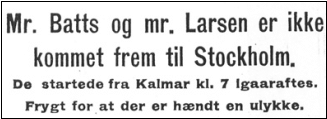 Meanwhile the news about the “disappearance” of Mr Batts and his flying boat reached the Norwegian press and gave the newspapers big headlines: “Mr Batts and Mr Larsen have not arrived in Stockholm. They departed from Kalmar at 7 pm – Fear that an accident has occurred” (see Norwegian heading). But Mr Batts and Mr Larsen were comfortably sitting on a freight-steamer, waiting for the first morning light. Once morning broke they boarded their flying boat and used the remaining petrol to fly to Furusund, where they could get 50 kg petrol. Half-an hour later (at 9.30 am) they were in the air again and flying towards Stockholm. But also in Sweden people were getting worried and the Swedish Navy had started a search and rescue party with boats.
Meanwhile the news about the “disappearance” of Mr Batts and his flying boat reached the Norwegian press and gave the newspapers big headlines: “Mr Batts and Mr Larsen have not arrived in Stockholm. They departed from Kalmar at 7 pm – Fear that an accident has occurred” (see Norwegian heading). But Mr Batts and Mr Larsen were comfortably sitting on a freight-steamer, waiting for the first morning light. Once morning broke they boarded their flying boat and used the remaining petrol to fly to Furusund, where they could get 50 kg petrol. Half-an hour later (at 9.30 am) they were in the air again and flying towards Stockholm. But also in Sweden people were getting worried and the Swedish Navy had started a search and rescue party with boats.
On 26 May at 10.05 am the Curtiss MF Seagull, N-4 sailed above the city of Stockholm and after a short flight above the city Mr Batts landed near the fleet’s shipyard. Upon arrival Mr Larsen emphasized (he was thinking of his business) to the press that “… both the flying boat and the engine functioned perfect during the whole trip. We had no accidents and have flown all the way from Tønsberg to Bergen and from Bergen via Stavanger and Kristiansand to Kristiania, further to Hamar, Skagen and København. En extra trip was made to Kalmar and Stockholm. The only thing irritating us is the problems with the supply of petrol”.
We know that the Curtiss MF Seagull flew to Helsinki later, but this part fells outside the context of this article. We will deal with this part of the trip later. Just some information: Five days later he arrived in Helsinki (Finland) and continued to Tallinn in Estonia (arrival 6 June). He returned to København on 15 June. Later (10 July) he made a trial flight on the air route Stockholm – Göteborg – Kristiania.
The fate of the Curtiss MF Seagull, N-4
In September 1919 it was sold for 40,000 Norwegian Kroner to the Norwegian airline company Nordisk Luftkraft A/S at Gardermoen. It was taken in use at the airline company’s flying school (Norsk Flyveskole A/S), but due to lack of capital the companies were liquidated in July 1920. On an auction to raise money A Johannesen (from Sarpsborg) bought the Curtiss MF Seagull and took it to Sarpsborg, but already on 13 August 1920 this lovely flying boat ended its life after a failed take-off from the river Glomma. It landed on the roof of a stable, was destroyed beyond repair and subsequently cancelled from the Norwegian Air Register.
Carl T Batts remained in Scandinavia for some time. A second Curtiss MF Seagull arrived to Norway and was assembled and flown to København. In October he arrived together with John M Larsen at København from Kristiania and it was said that this flying boat was bigger than the one that visited København in May. The engine installed had 200 hp. Unfortunately he could not make many flights out of København due to the early winter weather. The waters surrounding København turned into ice. In the beginning of November 1919 John M Larsen handed over the Curtiss MF Seagull to the Danish Navy. The official handover was on board the Danish naval light cruiser “Hekla”.
I would like to thank the following people for their contribution of the making of this article:
Lennart Andersson, Ralph Cooper (Early Birds of Aviation, USA) and Kay Hagby.
Notes:
- Picture taken from: http://www.geocities.com/kwii62/mf.htm
- Premierløitnant Leif Ragnar Dietrichson was later (1928) killed together with Roald Amundsen and French crew when their Latham flying boat crashed on their way to Spitzbergen. They were to participate in the search of the Italian air ship “Italia”.
- 2,000 feet is approximately 600 metres.
- The plane spotter did not quote the name correctly.

